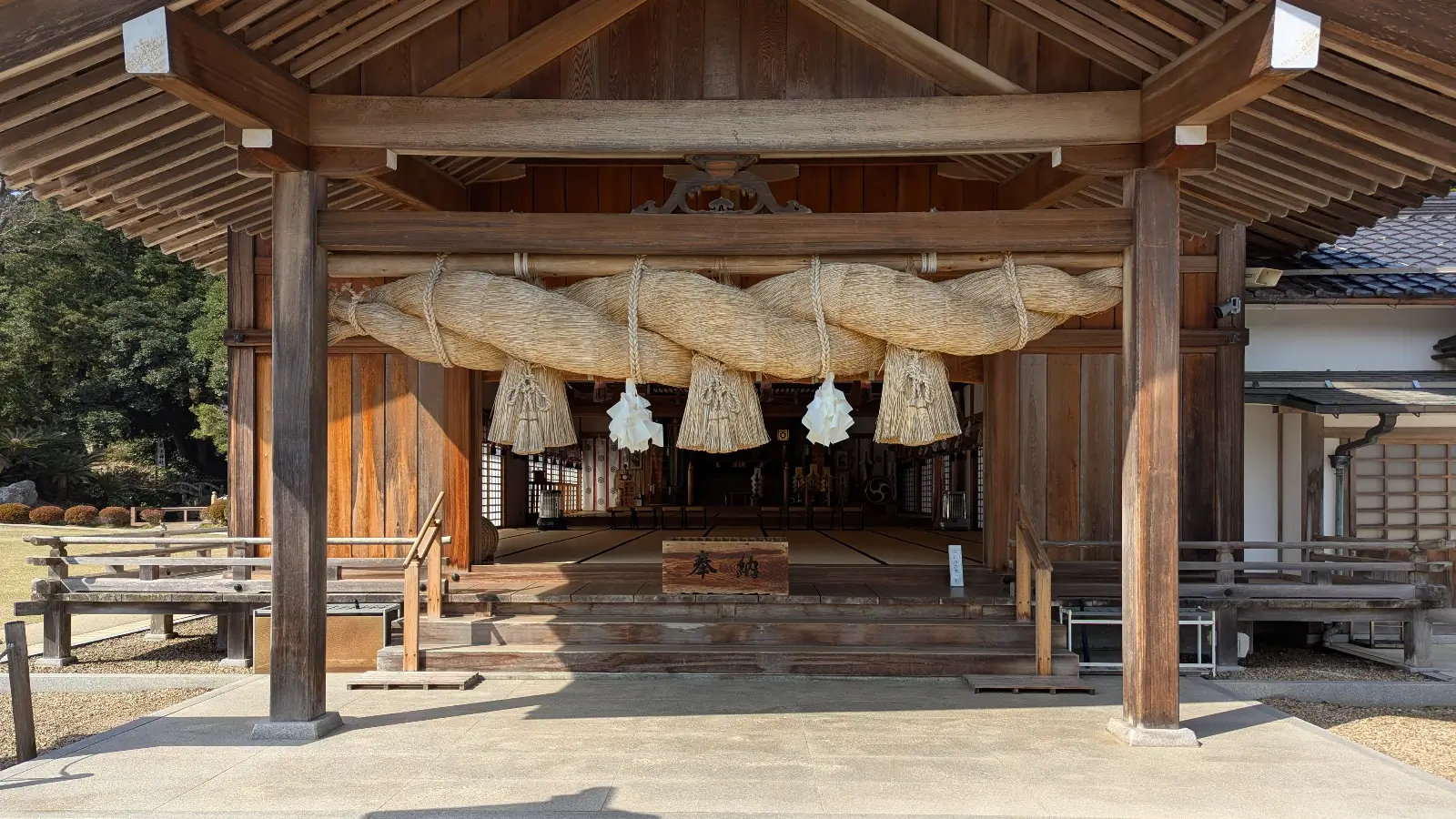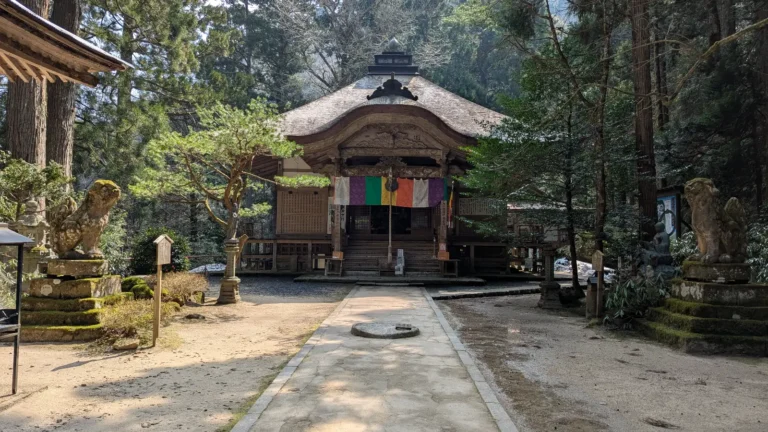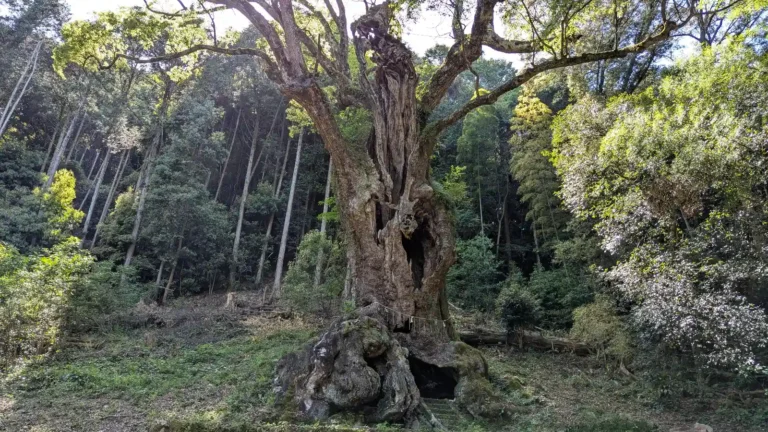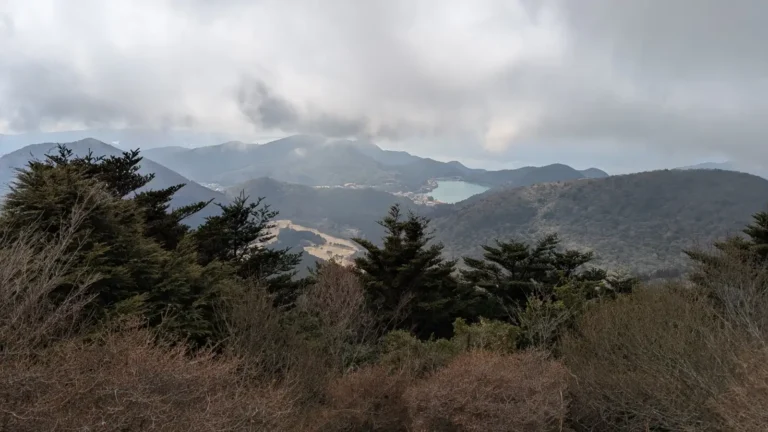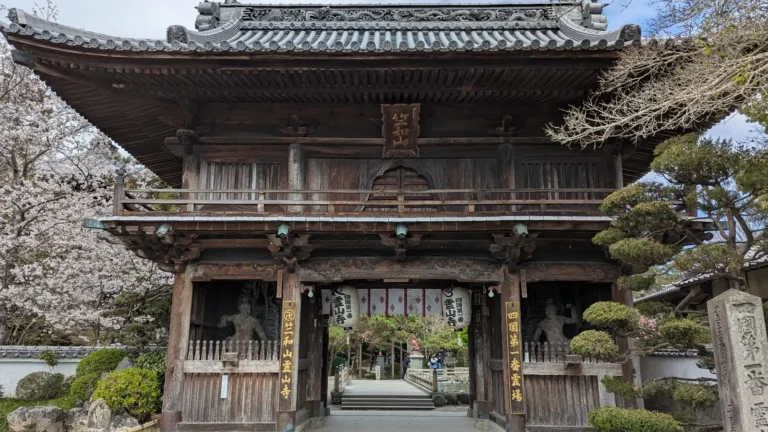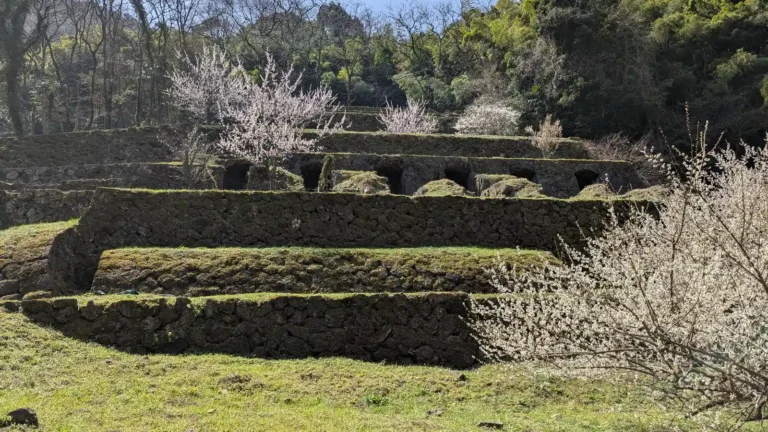Izumo Taisha: A JOTM Guide
You feel it before you see it. A hush, like something vast just stepped aside. The air carries salt from the coast and echoes from a thousand whispered prayers. The path into Izumo Taisha (出雲大社) begins not with spectacle, but with a pause, as if the land itself is waiting for your intention. This is where the gods are said to gather, where centuries-old rituals still echo through cedar groves, and where every visit becomes a quiet answer to the question: what are the most meaningful things to do in Izumo? Whether you’re tracing legends or simply learning how to get to Izumo Taisha from the coast or the city, this shrine invites presence, and rewards stillness.
Select links in this guide are affiliate links. They help sustain this space… allowing us to share more, with less dependence on advertising.
*Prices are subject to change.
Izumo Taisha at a Glance: Shrine Overview & Quick Facts
- Region: Chugoku (Shimane Prefecture)
- Nearest City: Izumo
- Type of Site: Shinto Shrine (Grand Shrine)
- Best Season to Visit:
- Spring (March–May): Plum blossoms bloom earlier than sakura, and soft green touches the ancient grounds.
- Summer (June–August): Lush and quiet, with fewer crowds and thick forest shade.
- Autumn (September–November): The shrine’s thatched roofs look golden against turning leaves.
- Winter (December–February): Brisk air, bare branches, and wide silence across sacred spaces.
Why It’s Special in One Sentence
Izumo Taisha is a shrine of reunion, where gods gather once a year, and people come searching for the thread that binds lives together.
Why Izumo Taisha Is Worth Discovering: Highlights of the Shrine’s Spiritual Weight and Sacred Atmosphere
- Believed to predate all others, Izumo Taisha isn’t just a relic. It breathes in the wind and the worn paths, in offerings laid gently on cedar-scented altars.
- In the tenth month of the lunar calendar, deities from across Japan are said to leave their own shrines to gather here. It’s why October is called Kannazuki, the month without gods, everywhere else, but Kamiarizuki, the month of gods, in Izumo.
- While often translated as “matchmaking,” the shrine’s spiritual role is deeper, it honors connections of fate, family, friendship, and soul. People come not just to find love, but to remember what love means.
- Izumo Taisha’s main hall stands 24 meters high, among the tallest shrine structures in Japan. Yet its grandeur feels hidden in plain sight, its presence revealed slowly as you walk closer, not all at once.
- The way you bow twice, clap four times, bow once. The thick shimenawa ropes overhead. The rhythm of old rites lives on, not as performance, but practice.
Must-See Wonders at Izumo Taisha: Main Hall, Sacred Rope, and Surrounding Ritual Spaces
The Main Hall
- A national treasure of silent strength, rebuilt every 60 years in the ancient taisha-zukuri style.
- You can’t enter, but its presence anchors the entire complex. Large, austere, and protected by ritual.
- At certain times of day, the sunlight hits the roof’s curve just so, and time stands still.
The Giant Shimenawa of the Kaguraden
- This sacred rope weighs nearly a ton, and hangs thick above the Kagura Hall’s entrance.
- Offer coins into the rope’s grooves for a prayer to reach deeper. Some catch. Others fall.
- Watch visitors tilt their heads back, awed, reverent, unsure whether to whisper or just feel.
The Pine Grove Approach
- Centuries-old pines line the long walkway to the shrine, quieting even the most hurried feet.
- Light filters through like memory, brushing stone lanterns and wooden gates.
- It’s not a path to rush. Walk it once, slowly, and once again in your mind before leaving.
The Treasure Hall
- Displays swords, scrolls, and ceremonial items linked to the shrine’s past.
- More than relics, they’re echoes of devotion, a map of what people once believed sacred enough to leave behind.
- Entry is optional, but rewarding for those who seek story in artifact.
The Rear Prayer Hall
- Tucked quietly behind the main hall, often less visited.
- Locals say it’s where wishes go to linger before becoming real.
- Offer a prayer here, then walk away slowly. You may find yourself listening more closely than before.
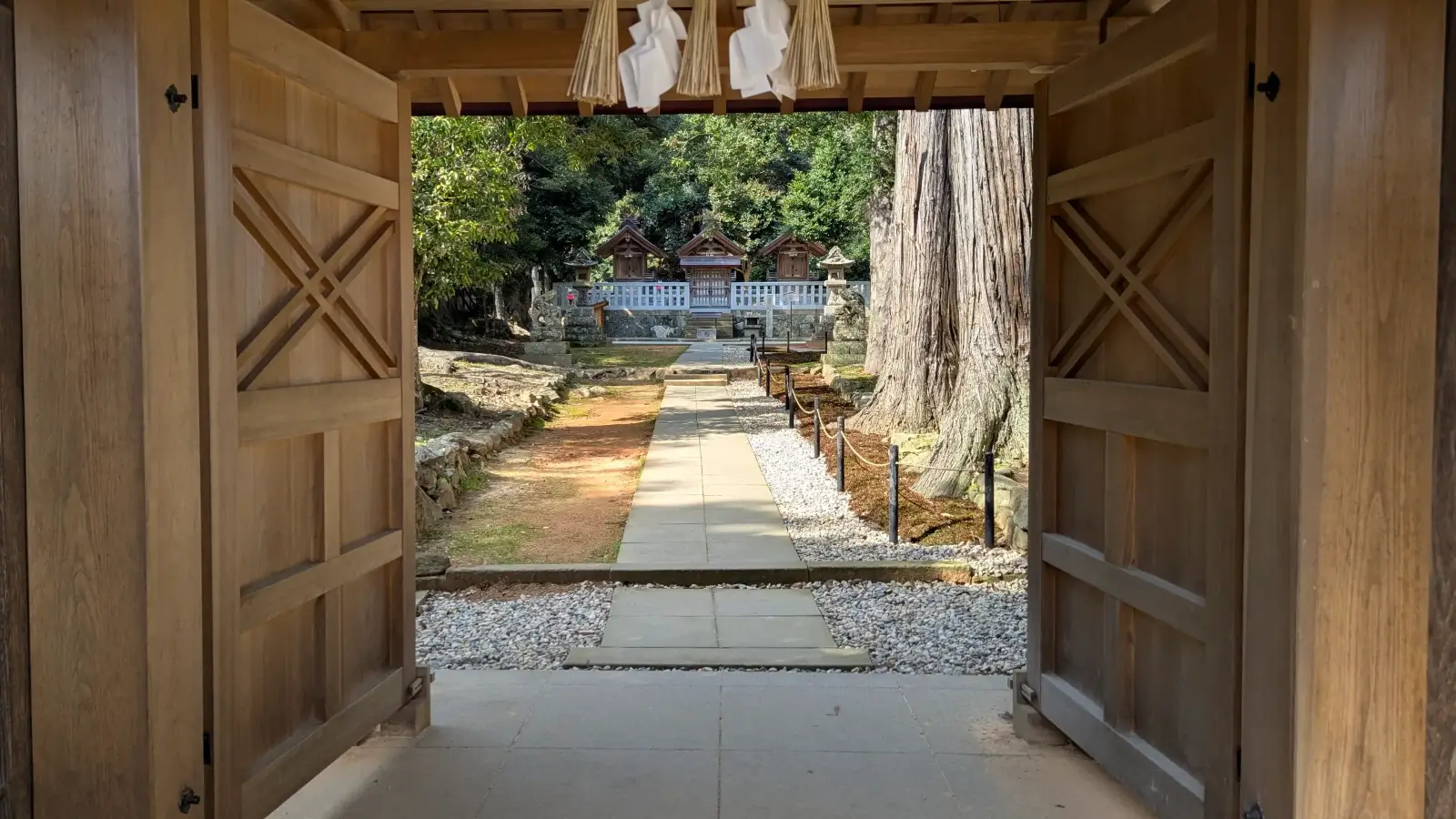
Local Secrets from JOTM: Hidden Tips for Visiting Izumo Taisha
- Arrive Just After Sunrise: The grounds are quietest around 7:00–8:00am. Mist still clings to the pine grove and you can hear the breeze through the shimenawa.
- Walk the Outer Paths First: Before heading straight to the main hall, circle the outer precinct. You’ll pass smaller shrines with deep stories, each one a doorway to a different kind of prayer.
- Visit in November’s Kamiarizuki: When gods are said to gather, the air around the shrine feels different. Subtle. Thicker somehow. The rituals shift slightly, the sense of presence intensifies.
- Pause at the Torii from the Sea: A short distance away stands a lone torii on Inasa Beach. It’s where deities are welcomed ashore during Kamiarizuki. The sea breeze here feels sacred.
- Clap Four Times, Not Two: At Izumo Taisha, you clap four times when praying, twice for yourself, and twice for those you’re praying for. A gesture of shared fate.
Nearby Sacred Spaces: Shrines and Beaches Near Izumo Taisha You Shouldn’t Miss
- Bentenjima – A torii stands against the waves; sunsets here feel eternal (5 minutes by foot).
- Soganoyashiro Shrine – Said to be dedicated to Susanoo-no-Mikoto, Izumo’s wild sibling deity, with roots older than many believe (at the back of Izumo Taisha).
- Izumo Cultural Heritage Museum – Small, serene, and insightful, offering deeper context on shrine architecture and the spiritual heritage of the region (10 minutes by foot).
Getting to Izumo Taisha: How to Access the Shrine by Foot, Bus, or Train
- By Train: Take the Ichibata Railway from Izumo-shi Station to Izumo Taisha-mae Station (approx. 25 minutes). The shrine is a 10-minute walk from the station.
- By Bus: From Izumo-shi Station, local buses go directly to Izumo Taisha in about 30 minutes.
- By Foot or Bike: If staying nearby, walking or renting a bike offers the slowest, most scenic approach.
- Hours: Open daily from sunrise to sunset.
- Cost: Free entry, though the Treasure Hall has a separate fee of ¥300.
For travelers using the Japan Rail Pass, portions of this route may be covered, our guide offers practical insights on when it’s worth considering.
Resting Nearby: Hotels near Izumo Taisha
- Inishie no Yado Keiun – A refined hot spring ryokan blending tradition with quiet luxury, just minutes from the shrine.
- RITA Unnan Yoshida – A thoughtful retreat housed in a former school, deep in the countryside, a place for stillness and reflection, about 45 minutes from Izumo.
- Manabi-stay Matsue – Minimalist and design-forward, this stay near Lake Shinji offers a peaceful base for exploring the region slowly.
- Onyado Nono Matsue Natural Hot Spring – A traveler’s favorite in Matsue, where natural baths and tatami-lined comfort meet urban convenience.
For those staying longer in the region, our full Matsue guide offers deeper insight into where to go, what to feel, and how to slow down in this historic lakeside city.
If you’re planning a broader journey through Japan, our foundational guides offer clarity for every step of the way. Explore Planning a Trip to Japan: A JOTM Guide, learn How to Get Around Japan, and find the Best Time to Visit Japan for a season that resonates with your rhythm.
FAQs and Travel Tips about Izumo Taisha: A Few Last Things Before You Go
Planning your visit? This guide answers the most asked questions about Izumo Taisha, including how to get there, what to see, and why the gods gather here.
A: Early mornings in spring or late autumn offer the quietest atmosphere, especially along the pine-lined paths. November’s Kamiarizuki, when all of Japan’s gods are said to gather here, adds rare spiritual depth.
A: Most travelers spend 1.5 to 2 hours at Izumo Taisha, but those exploring the forest paths, rear shrines, and heritage museum often linger longer.
A: Izumo Taisha is located in Izumo City, Shimane Prefecture, on the western coast of Japan’s main island. It’s about 30 minutes from Izumo-shi Station by local train or bus.
A: It’s considered Japan’s oldest shrine and a spiritual site of enmusubi, where gods gather and human bonds are honored.
A: No, entry to Izumo Taisha is free and requires no ticket. Tickets for the Treasure Hall exhibit (¥300) are only available on-site.
A: Yes, clap four times instead of the usual two. It’s a tradition unique to this shrine, meant to honor both yourself and others.
A: There are limited English signs at Izumo Taisha. For deeper understanding, consider reading ahead or visiting the nearby Izumo Cultural Heritage Museum for context.
A: According to Shinto belief, all the kami (deities) of Japan come to Izumo once a year to discuss human fate and connections, making this shrine uniquely sacred.
A: Take the Ichibata Railway to Izumo Taisha-mae Station (about 25 minutes), then walk 10 minutes to the shrine. Alternatively, a direct local bus takes about 30 minutes.
A: Enmusubi refers to the spiritual binding of people, romantic partners, family, or even destinies. Izumo Taisha is one of Japan’s most sacred places for seeking these bonds.

